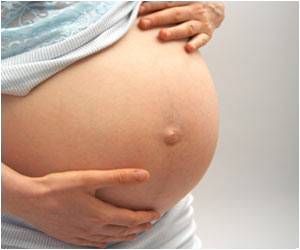- Cesarean delivery can be avoided if labor is induced in healthy women at 39 weeks into their pregnancy
- Induction of labor proved to be at least as safe as spontaneous labor when several health indicators in newborns like death, seizures, bleeding, and trauma were compared between the two groups
- Hence inducing labor is a reasonable option and may give the best chance for vaginal delivery and improve outcomes
Cesarean or C-section is on the rise
The study was conducted to address the steadily increasing rate of babies being delivered by C-section in the U.S – one-third of women in the U.S. give birth via cesarean section. The rate is steady at 32 percent since 2016. Around 80 percent of the cesarean deliveries were medically unnecessary and happened to healthy first-time mothers.The cesarean procedure is generally safe, but there is a risk of complications to both mother and baby, and to future pregnancies. Significant risks include an increased likelihood of infection, hysterectomy, abnormalities in placenta implantation in future pregnancies, and respiratory illness in infants. Delivering through C-section once makes it more likely to go the same way the next time around too, increasing the likelihood of high-risk complications such as placenta accreta.
However, doctors and health care providers have also been told for years to avoid inducing labor in healthy, first-time mothers as it could increase the chance of C-section births. Results from recent, small, observational studies have indicated that this may not necessarily be the case.
ARRIVE Clinical Trial - NIH-funded study to compare induced labor and normal delivery
Researchers enrolled 6,106 first-time pregnant women into the randomized trial that was carried out at 41 hospitals.
- One-half of the women would undergo an elective induction (inducing labor without a medical reason) at 39 weeks of gestation when the baby is full term, and it is considered safe for mothers to give birth
- Another half would belong to the expectant management group (waiting for spontaneous labor and intervening only if problems occur)
- The elective induction group had lower rates of cesarean births (19%) as compared to the expectant management group (22%)
- The elective induction group had lower rates of preeclampsia and gestational hypertension (9%) as compared to the expectant management group (14%)
- The induction group also had lower rates of respiratory support among newborns in the (3%) as compared to the expectant management group (4%)
- Inducing labor at 39 weeks could eliminate the need for C-section in 1 out of 28 deliveries
- The elective induction group probably fared better because the placenta tends not to function as well later in pregnancy
- The results stayed similar regardless of the woman’s age, ethnicity and BMI
References:
- Labor Induction versus Expectant Management in Low-Risk Nulliparous Women William A. Grobman, M.D., Madeline M. Rice, Ph.D., et al.,
- Induced labor after 39 weeks in healthy women may reduce need for C section - (https://www.nih.gov/news-events/news-releases/induced-labor-after-39-weeks-healthy-women-may-reduce-need-c-section)













